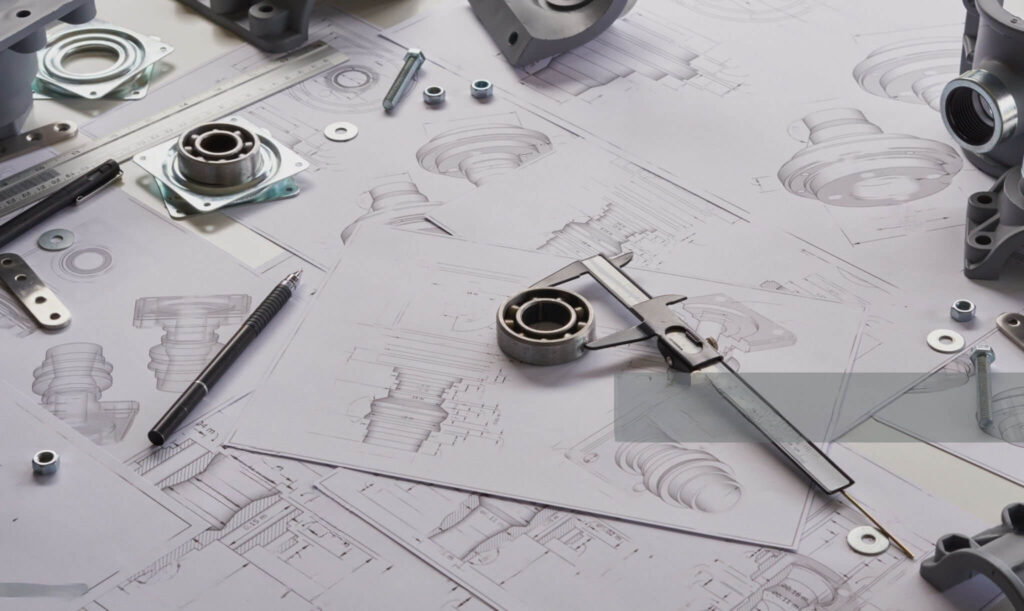Introduction
In the realm of manufacturing and production, the advent of rapid manufacturing and 3D printing technologies has marked a revolutionary shift, heralding an era of innovation and customized solutions. These technologies, characterized by their ability to transform digital designs into physical objects, have permeated various industries, from healthcare and aerospace to fashion and construction. This article delves deep into the evolution, principles, applications, and future trends of 3D printing and rapid manufacturing, exploring their transformative impact on consumer patterns and industrial paradigms.
Demystifying the Concepts
- 1.1 Rapid Prototyping (RP) Originating in the late 1980s, Rapid Prototyping (RP) emerged as a pioneering technology that leveraged material accumulation methods to create three-dimensional models layer by layer. It amalgamates diverse engineering fields, including Computer-Aided Design (CAD), reverse engineering, layered manufacturing, and laser technology, enabling the swift creation of prototypes for design verification and functional testing.
- 1.2 Rapid Manufacturing (RM) Rapid Manufacturing (RM) extends beyond prototyping, encompassing the direct production of end-use products. It is adept at manufacturing personalized products in small batches, showcasing its versatility and adaptability in meeting diverse consumer needs.

Mainstream Technologies and Their Characteristics
- 2.1 Stereolithography (SLA) SLA is one of the earliest 3D printing technologies, utilizing ultraviolet lasers to solidify liquid resin layer by layer. It is renowned for its high precision and surface finish, making it suitable for creating intricate models and prototypes.
- 2.2 Fused Deposition Modeling (FDM) FDM is a widely used technology that extrudes thermoplastic material layer by layer to form a three-dimensional object. It is valued for its cost-effectiveness and compatibility with a variety of materials, catering to a broad range of applications.
- 2.3 Selective Laser Sintering (SLS) SLS employs a high-power laser to fuse powdered material, creating durable and complex geometries. It is versatile in material selection, capable of processing polymers, metals, and ceramics, thus serving diverse industries.
- 2.4 Direct Metal Deposition (DED) DED is a metal additive manufacturing process that utilizes a focused energy source, such as a laser, to melt and deposit material layer by layer. It is ideal for repairing and adding features to existing components.
- 2.5 Layered Object Manufacturing (LOM) LOM involves the lamination of thin sheets of material, which are subsequently cut to shape and bonded together. It is a cost-effective method for producing large parts with moderate detail.
Governmental Support and Global Trends
Governments worldwide, recognizing the transformative potential of 3D printing and rapid manufacturing, have been instrumental in fostering their development. The United States, China, and several European countries have initiated policies and funding to accelerate research and application in these fields. These technologies are envisioned as catalysts for the third industrial revolution, characterized by digitization, decentralization, and personalization.
- 3.1 Policy Initiatives Various governmental bodies have introduced policies and initiatives to support the advancement of 3D printing and rapid manufacturing. These include grants, tax incentives, and the establishment of research centers, aiming to cultivate innovation and enhance competitiveness.
- 3.2 Global Adoption The adoption of these technologies is gaining momentum across the globe, with industries exploring their applications to optimize production processes, reduce costs, and meet evolving consumer demands. The healthcare sector, for instance, leverages 3D printing for personalized implants and prosthetics, while the aerospace industry utilizes it for lightweight and complex components.
Shifting Consumer and Manufacturing Paradigms
The rise of 3D printing and rapid manufacturing signifies a paradigm shift in both consumer behavior and manufacturing practices. The growing demand for personalized and customized products is reshaping the market landscape, with manufacturers adapting to accommodate individual preferences.
- 4.1 Mass Customization The concept of mass customization epitomizes the transition from mass production to personalized manufacturing. Consumers are increasingly seeking products tailored to their specific needs and preferences, prompting manufacturers to adopt flexible and adaptable production methods.
- 4.2 Impact on Traditional Manufacturing Traditional manufacturing, characterized by molds and mass production, faces challenges in adapting to the changing consumer landscape. The advent of 3D printing and rapid manufacturing offers alternative solutions, enabling manufacturers to produce customized products efficiently and cost-effectively.
Future Prospects and Challenges
While 3D printing and rapid manufacturing hold immense promise, they also encounter challenges that need addressing to realize their full potential. The exploration of new materials, enhancement of precision, and reduction of costs are pivotal for their widespread adoption and integration into mainstream manufacturing.
- 5.1 Material Innovation The development of new and diverse materials is crucial for expanding the applications of these technologies. Research in material science aims to discover materials with enhanced properties, such as strength, durability, and biocompatibility, to meet the demands of various industries.
- 5.2 Technological Advancements Continuous advancements in technology are essential for improving the accuracy, speed, and efficiency of 3D printing and rapid manufacturing processes. Innovations in hardware, software, and process optimization are underway to address current limitations and enhance performance.
- 5.3 Ethical and Environmental Considerations As these technologies continue to evolve, ethical and environmental considerations come to the forefront. The responsible use of resources, waste management, and intellectual property rights are among the issues that necessitate careful deliberation and regulation.
Conclusion
3D printing and rapid manufacturing technologies stand at the forefront of a manufacturing renaissance, offering a plethora of opportunities and possibilities in product design, development, and production. As we navigate through the challenges and explore the untapped potential, the future of manufacturing beckons a transformative era where innovation, customization, and sustainability converge.
This article provides a comprehensive overview of the evolution, impact, and future of these groundbreaking technologies, serving as a testament to their transformative power in reshaping industries and consumer experiences. The journey ahead is filled with possibilities, and as we embrace the change, we are crafting a future where imagination meets reality, and dreams are brought to life.

